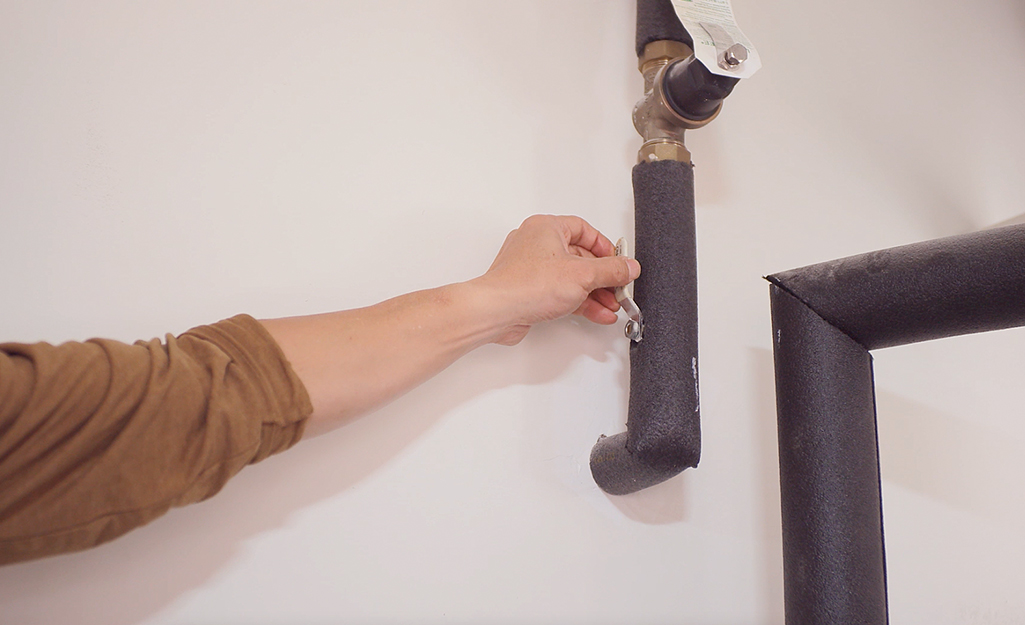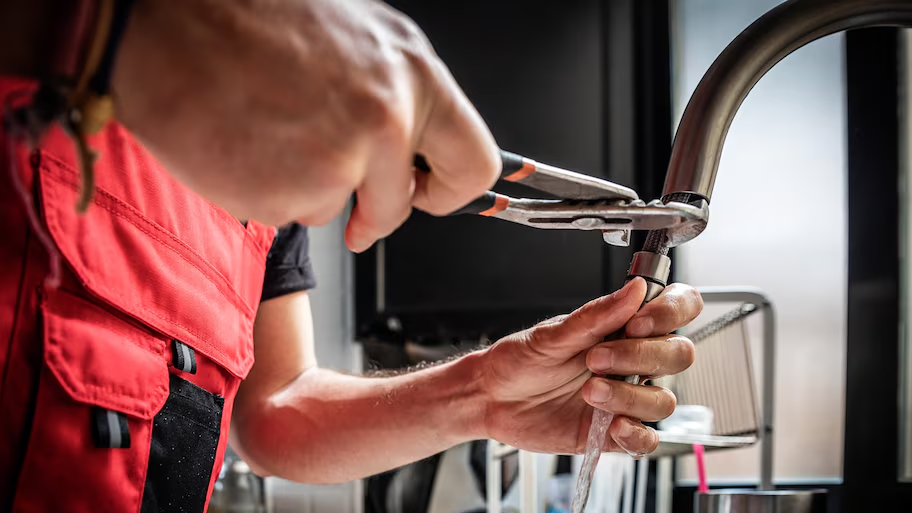We have discovered this post pertaining to Water Dripping from Faucet: Why and How to Fix listed below on the net and think it made good sense to write about it with you on this site.

Dripping taps could seem like a minor inconvenience, yet their effect goes beyond just the aggravation of the audio. From wasting water to incurring unnecessary monetary prices and wellness risks, overlooking a leaking faucet can lead to different repercussions. In this article, we'll explore why it's vital to resolve this typical family issue quickly and effectively.
Waste of Water
Environmental Influence
Trickling taps contribute dramatically to water wastefulness. According to the Environmental Protection Agency (EPA), a solitary tap trickling at one drip per secondly can throw away more than 3,000 gallons of water annually. This not just strains water resources yet likewise impacts environments and wild animals dependent on them.
Step-by-Step Overview to Dealing With a Dripping Faucet
Devices Called for
Prior to trying to repair a trickling faucet, collect the needed tools, consisting of a flexible wrench, screwdrivers, replacement parts (such as washing machines or cartridges), and plumber's tape.
Usual Faucet Issues and Their Solutions
Determine the kind of faucet and the certain issue causing the drip. Typical problems include damaged washers, rusty valve seats, or faulty O-rings. Refer to manufacturer directions or on the internet tutorials for detailed guidance on repairs.
Financial Prices
Enhanced Water Expenses
Beyond the ecological effect, leaking faucets can blow up water expenses substantially. The accumulated wastefulness with time equates into greater utility expenditures, which could have been prevented with timely fixings.
Possible Residential Or Commercial Property Damages
Additionally, extended dripping can result in harm to fixtures and surface areas surrounding the tap. Water build-up can cause discoloration, corrosion, and also structural problems if left neglected, leading to additional fixing costs.
Health and wellness Concerns
Mold and Mold Development
The continuous visibility of dampness from a dripping faucet develops a perfect atmosphere for mold and mildew and mold development. These fungi not just endanger interior air top quality but also position health and wellness dangers, specifically for people with respiratory system problems or allergic reactions.
Waterborne Conditions
Stationary water in trickling taps can come to be a breeding place for microorganisms and various other microorganisms, boosting the danger of waterborne diseases. Contaminants such as Legionella bacteria grow in stationary water, potentially resulting in serious ailments when consumed or breathed in.
DIY vs. Specialist Repair service
Benefits and drawbacks of DIY Repair
While some might attempt to take care of a trickling tap themselves, DIY repair services come with their very own set of difficulties. Without appropriate expertise and tools, do it yourself attempts can worsen the concern or result in insufficient repairs, extending the trouble.
Benefits of Employing a Specialist Plumber
Employing a specialist plumber makes sure that the underlying source of the trickling faucet is attended to successfully. Plumbing professionals have the competence and equipment to identify and fix faucet problems successfully, saving time and decreasing the danger of more damages.
Environmental Responsibility
Private Payment to Preservation
Taking duty for repairing trickling taps straightens with wider initiatives toward water preservation and environmental sustainability. Every individual's actions collectively make a significant effect on preserving priceless sources.
Sustainable Living Practices
By focusing on timely repairs and taking on water-saving habits, people contribute to lasting living methods that profit both present and future generations.
Safety nets
Routine Upkeep Tips
To avoid trickling faucets, execute routine upkeep such as cleaning aerators, evaluating for leaks, and changing damaged components promptly. Furthermore, take into consideration setting up water-saving gadgets or updating to much more effective components.
Importance of Prompt Repair Works
Resolving dripping faucets as soon as they're observed protects against more water wastage and potential damage, ultimately saving both water and cash over time.
Influence On Residential Or Commercial Property Value
Understanding of Well-Maintained Residential Property
Preserving a property in good condition, consisting of resolving upkeep problems like leaking faucets, boosts its regarded value and desirability amongst potential customers or lessees.
Impact on Resale Value
Properties with properly maintained plumbing components, including taps, command higher resale worths in the realty market. Addressing leaking faucets can add to a positive impact during building examinations and settlements.
Verdict
Dealing with a trickling faucet exceeds plain benefit; it's a crucial step toward preserving water, reducing financial expenses, and guarding health and wellness and residential property. Whether with do it yourself repair work or professional support, taking action to fix trickling taps is a little yet impactful method to promote responsible stewardship of sources and add to a healthier, much more sustainable future.
How to Fix a Dripping or Leaky Faucet
A leaking faucet is one of the most common problems that homeowners encounter, but it being commonplace doesn’t make it any less annoying. The constant drip drip drip of a leaking bathtub faucet, showerhead, or sink tap can disturb your home’s serenity. Left neglected, a dripping faucet can also result in higher water bills and discoloration or mold growth in your sink or plumbing fixtures.
Fortunately, you don’t have to be a trained plumber to know how to stop a dripping faucet. With some basic tools, replacement parts, and a little patience, leaky faucet repair is a breeze. In this article, we’ll explain what causes dripping faucets and how you can fix them.
What Causes a Leaking Faucet?
Kitchen and bathroom faucets come in all manner of designs, but most involve some combination of valves, O-rings, seals, and washers. The O-ring is usually the weakest link, but any one of these pieces can wear down over time. Heat, moisture, temperature fluctuations, minerals, mold, and movement can contribute to warping and corrosion, breaking the watertight seal. This just comes with the territory of being a homeowner. Everything is always subject to wear and tear, and some component parts of your appliances and fixtures need to be replaced on occasion. At least replacement O-rings are cheap!
More rarely, dripping faucets can be a symptom of excessively high water pressure. Were this the case in your home, you would probably notice that the leak is not isolated to one faucet. Water pressure issues are harder to resolve on your own. We recommend contacting a professional plumber if you suspect your water pressure is too high.
How to Fix a Dripping Faucet
Pipe wrench or monkey wrench Allen wrench set Screwdrivers Old towel or rag Shut off the water.
Before you do anything, you need to turn off the water to keep from drenching your kitchen or bathroom. You should find a valve under the sink and against the wall. Once you’ve turned this valve, try turning the faucet on to confirm that the water source has been cut off.
If you can’t locate your local valve for the faucet you’re working on, you can always shut off the water to the house at the main valve. Of course, this will prohibit anyone from using the sinks, showers, or toilets while you’re working on the faucet that’s giving you trouble.
Plug or block the drain.
You’ll be disassembling the faucet and removing some small bits of hardware. Plug the drain with a stopper or rag to avoid the possibility of a small screw falling into your P-trap.
Take apart the faucet assembly.
There are several varieties of kitchen and bathroom faucets, each with its own manner of assembly. For detailed instructions on how to disassemble your faucet, you can refer to the fixture’s manual or contact the manufacturer. If you know whether you have a ball, disc, cartridge, or compression faucet, you can find detailed schematics online.
In general, you need to begin by removing the faucet handles. You might notice a small screw that you’ll need to remove with a screwdriver or Allen wrench. If you don’t see any visible securing hardware, it’s likely hidden under a decorative cap that can be unscrewed or popped off with flathead screwdriver.
Remove each piece methodically, consulting a schematic when necessary. Take notes or arrange the pieces in such a way to make it easier to correctly reassemble the faucet later.
Remove the cartridge.
Once you’ve removed the handles and securing hardware, you should be able to remove the valve cartridge or stem. Some cartridges will slide right out. Other faucet models will require you to loosen a nut with a pipe wrench before you can remove the valve stem.
Examine the exposed hardware.
With the cartridge or stem removed, inspect the component parts. Check the rubber O-rings for wear and tear. Also examine the seat washer for corrosion or other damage. These pieces are usually the responsible parties for a dripping faucet, but it’s worth inspecting the other component parts while you have the faucet disassembled.
Find replacement parts.
Once you’ve identified which faucet component has failed, find an identical replacement. Your local hardware store should have O-rings, seat washers, and other standard components in stock. If you have a luxury or uncommon faucet, you may have to contact the manufacturer for a replacement part.
It’s a good idea to take your old parts with you to the hardware store so you can compare them with the store’s inventory and be sure you’re purchasing the correct replacement.
Reassemble the faucet.
With your new parts in hand, reconstruct the faucet and handles. Don’t be tempted to overtighten screws or nuts. You might think this could create a better seal, but it can instead damage or bend a delicate part of the assembly and create a new problem for you.
Turn on the water and test the faucet.
The only thing left to do is test your work. Unplug the sink, turn the water back on, and try the faucet. Congratulate yourself on a job well done!
https://www.libertyhomeguard.com/how-to-fix-a-dripping-or-leaky-faucet/

Do you like more info about ? Put a remark further down. We'd be pleased to see your thinking about this posting. We are looking forward that you visit us again before long. For those who appreciated our blog post please don't forget to pass it around. I recognize the value of reading our article about Why Is It Important To Fix Your Leaking Tap/Faucet?.